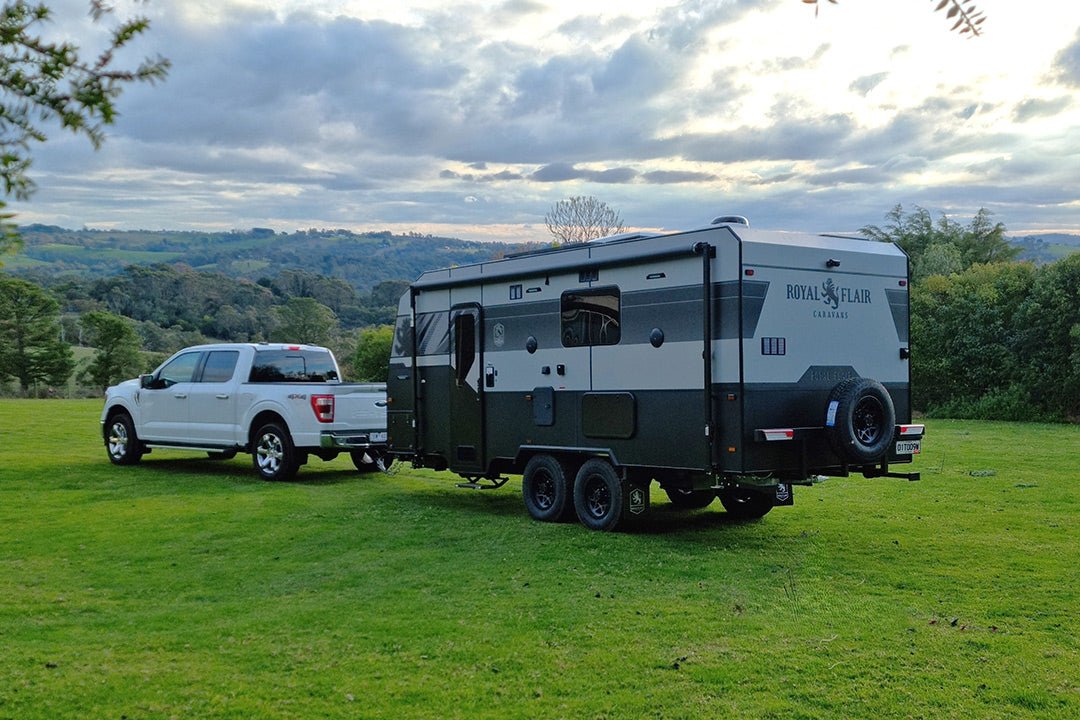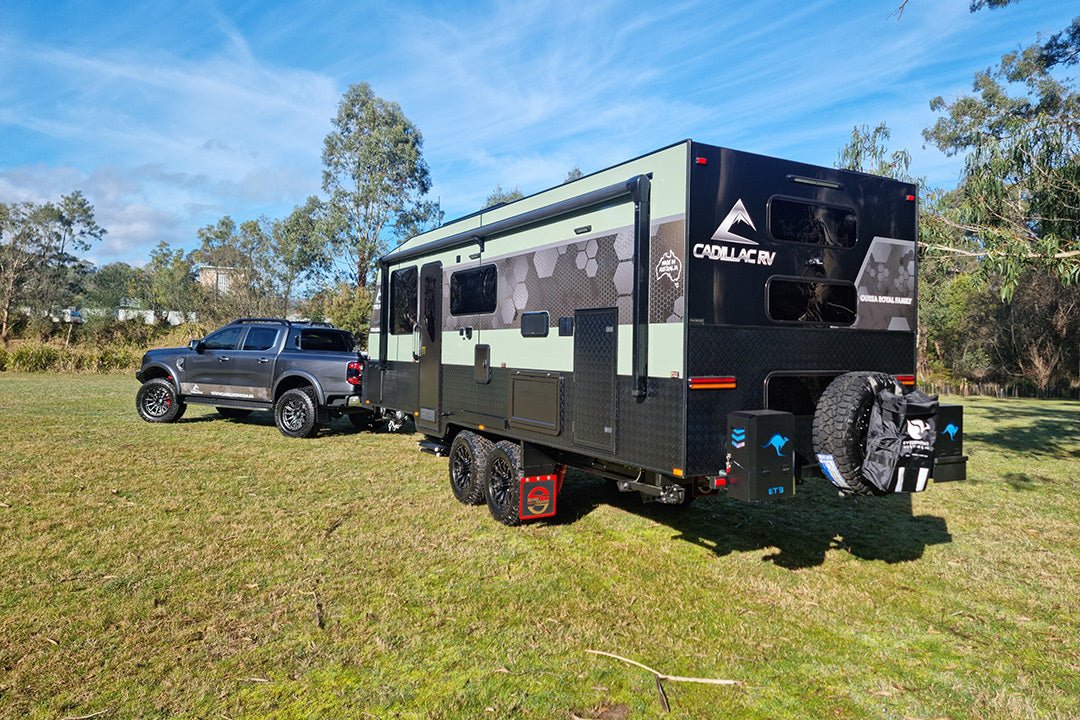Hidden in the WA Outback
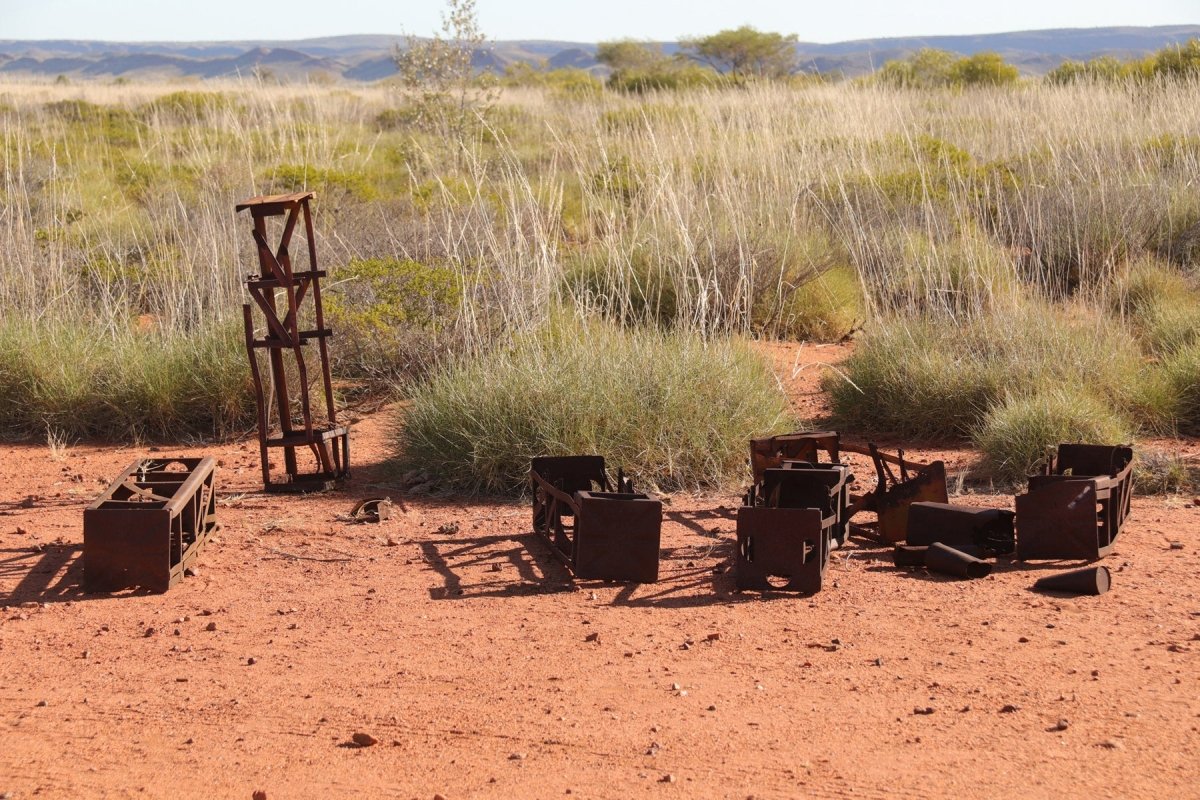
In desolate, semi-desert spinifex country, set alongside a dramatic ironstone ridge, a heavily camouflaged and carefully hidden structure known as No 73 Operational Base Unit can be found. It used to be called Corunna Downs, the name of the still-active cattle station on which the base is located.
The air base has been excised from the Corunna Downs Station so visitors can now visit this site freely, without needing permission from the station. The long runways still remain, built to handle the heaviest four-engine bombers of the day. In fact, they have recently been graded and cleared of both the old cracked and parched bitumen surface and the encroaching spinifex and desert foliage.
The main runways (east/west and north/south), measuring 2,300 metres and 1,650 metres (and each 50 metres wide), can thankfully now be driven on without fear of encountering huge bombers landing or taking off. It is, indeed, quite a sobering experience to drive where these aircraft once operated. In addition, there were some six kilometres of taxi ways, some of which have also been cleaned up and are also readily accessible. This is harsh, unforgiving country with nearby Marble Bar recognised as Australia’s hottest town — certainly not a great place to be working year-round in the pressured conditions of a WWII air base.
Life on the Base
The working life of airmen on the base back in the 1940s was indeed harsh. At any one time, some 300 men were based here in these very trying conditions with minimal facilities, including no air-conditioning or refrigeration. In addition to the relentless heat, servicemen living at the base in four-man tents were also tormented by flies, scorpions and snakes. Rations consisted of tinned vegetables and cans of bully beef. Their water supply (from a brackish bore) was so hot that showers were impossible until the pipes cooled down around 9 o’clock at night. Their four-man tents were very basic and particularly uncomfortable in the heavy rains of the annual wet season in the region. Their only real respite from the conditions was an occasional leave visit to nearby Marble Bar and the introduction of an open-air picture show at the base in 1944. Nevertheless, morale remained high, as the airmen realised the important contribution they were making to the war effort from their proudly secret but very successfully operated air base.
A visit to this lonely centre today in our modern air-conditioned vehicles is a much more enjoyable, but somewhat eerie experience, with the piercing call of an occasional crow the only noise that disturbs the vast silence. Of course, things were not always so deathly quiet in this remote place. The regular roar of the four x 1200 horsepower engines of the long-range B-24 Liberator bombers wheeled at the end of the runway and paused before commencing their take-off run, heavily laden with bombs destined for Japanese bases on Java, Borneo, Celebes, Singapore and other island targets to the north of the Australian coastline. It was, in its time, quite a noisy, bustling place to be. Today, in its peaceful serenity, visitors can only imagine the activity out here all those years ago.
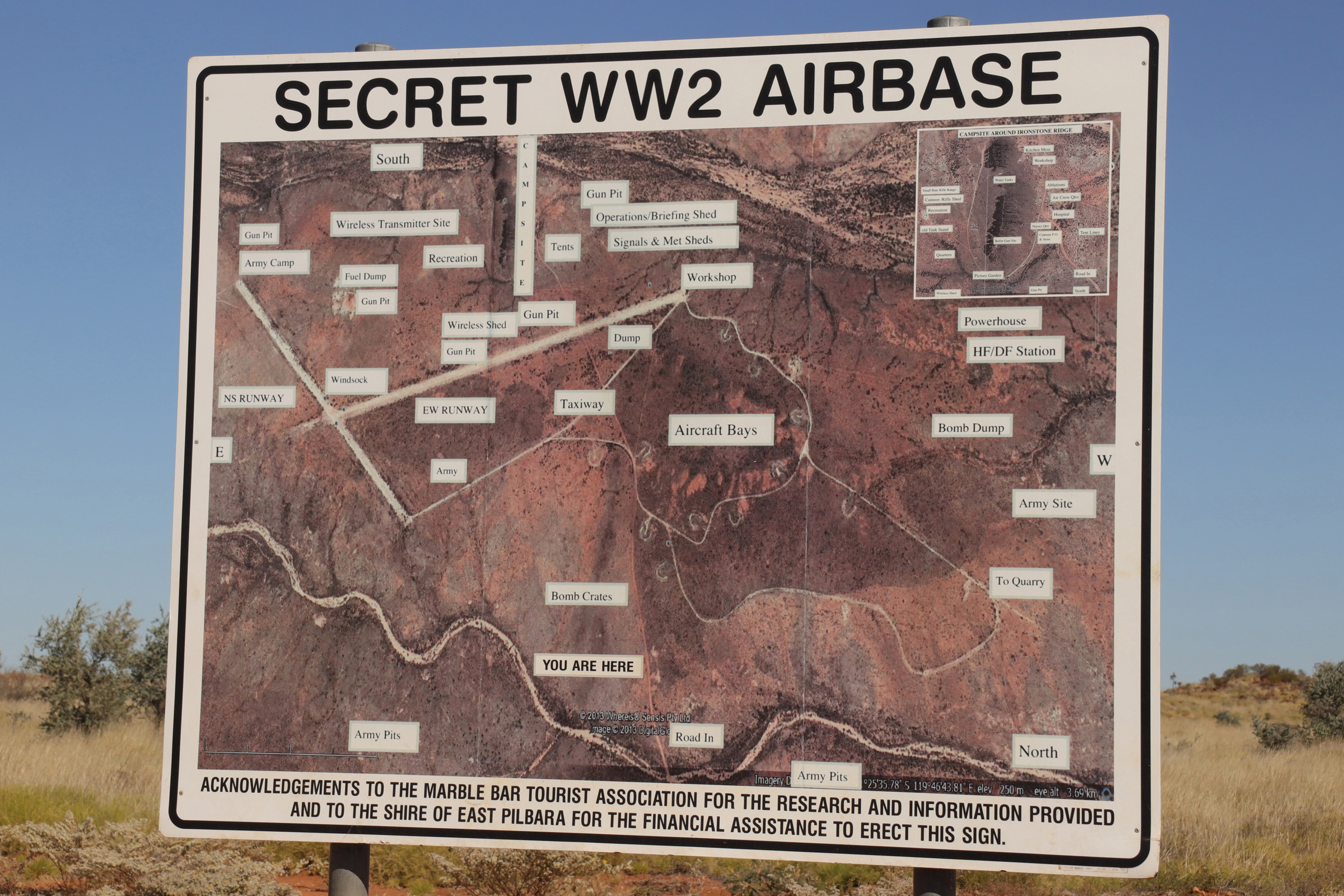
Wartime Remnants
In this remote country, where once stood the many camouflaged buildings required for the administration and operation of this little-known but major air base, only a few crumbling concrete foundations can now be seen — the air crew quarters, kitchen mess, canteen, store, hospital, ablutions, workshops and picture gardens. Sadly, many of these scant remains are progressively being overgrown with spinifex and other vegetation. The remainder of an old windsock pole still stands defiantly near the old runways, and the earth-formed aircraft bunkers — once covered with camouflage netting and Spinifex to hide the planes — can still be seen scattered across the base. Each of the 20 or so horseshoe-shaped bunkers housed one of the giant bombers which were carefully tucked away after each flight so maintenance, refuelling and re-arming could be carried out. It’s interesting to see how the bunkers (or revetments) were spread far enough apart to minimise damage to the aircraft if the base was ever bombed.
Camping in one of these long-abandoned aircraft bunkers, which we did on our recent visit, was quite an eerie experience. We tried to imagine the scene all those years ago, where right in the exact spot we were enjoying happy hour was one of those huge bombers, hidden away and being prepared for its next flight.
Elsewhere around the old base you can see several anti-aircraft gun pits, small piles of rusting fuel drums, ammunition containers, bomb holders and many other wartime scraps. It is believed that all the old, live ammunition has now been cleared away, but visitors should still be careful they don’t stumble over any that have been missed. After all this time, such live rounds would be very unstable and very dangerous.
There is also a lonely grave at the foot of the nearby ironstone hillside with a small plaque identifying it as the final resting place of RAAF Sergeant Ernest Newton Cook (46603) who was tragically killed in a motor vehicle accident en route to nearby Marble Bar on 5th December 1944. His grave is at the site of the picture gardens which he operated for the enjoyment of all who worked on the base.
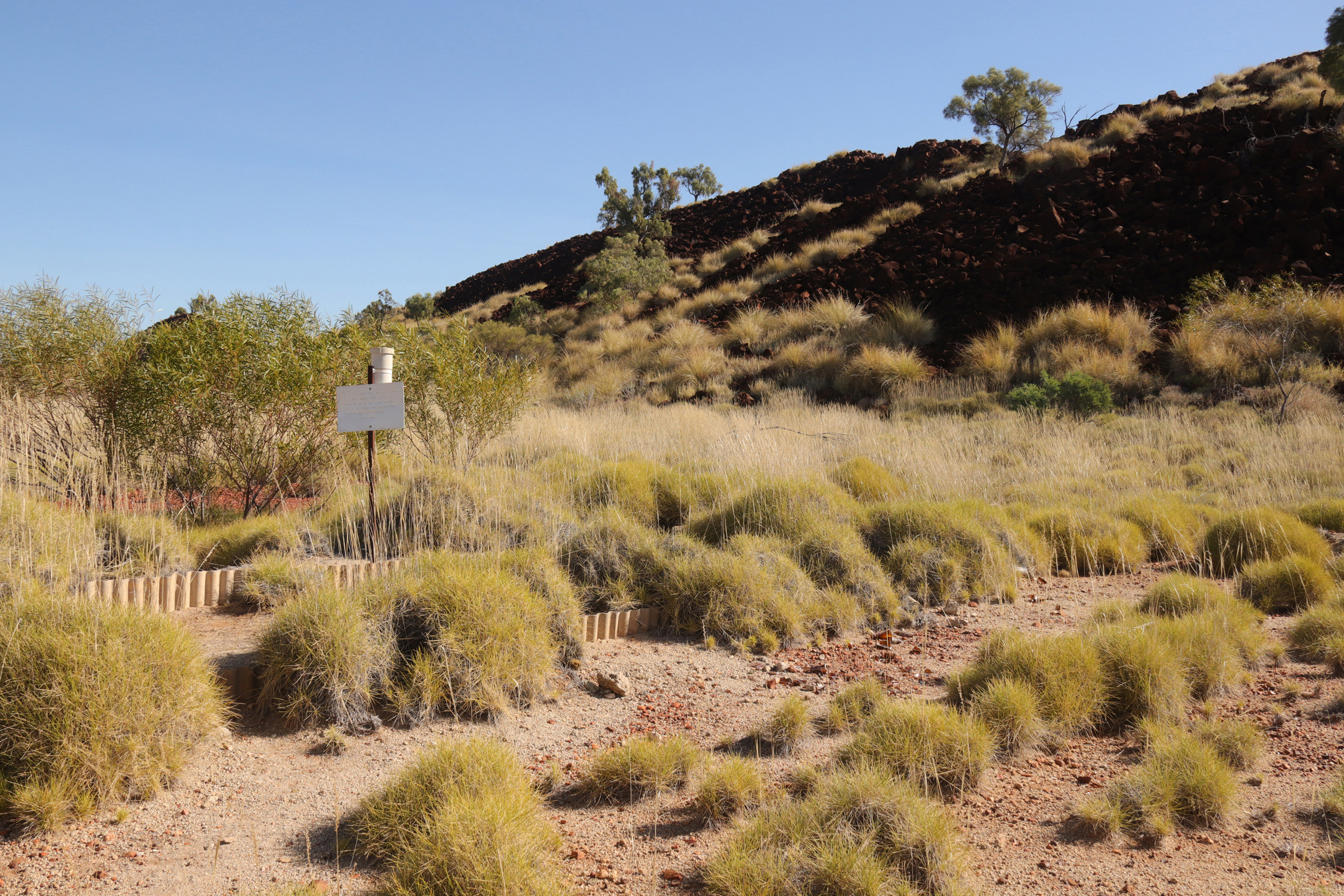
Secret Operations
It was between 1943 and 1945 that bombing mission activity from Corunna hit its peak. On this now empty and almost forgotten spinifex and ironstone countryside, Australian and American Air Force units (the 30th bomber Group of the US Air Force and No 25 Squadron of the RAAF) blasted the Japanese bases that threatened Australia from the north as well as hammering the enemy shipping which was so vital to Japanese supplies and troop movements.
Although bombers could reach Japanese targets from other northern bases around Darwin, such flying took aircraft over several islands which had been taken over by the Japanese. The base at Corunna Downs gave aircraft the advantage of surprise, approaching their targets from over the sea. It had always been feared that the returning bombers may have been followed and the location of the base discovered, but this was apparently never attempted.
During the war, no mention was ever made of these highly secret operations in press or radio reports, and every effort was made to keep from the Japanese any knowledge that Corunna Downs airfield existed. Japanese reconnaissance aircraft searched extensively over northern WA for a base they were sure existed, but their continual scouring always ended in failure. It is even reported that on one occasion, one of their long-range reconnaissance planes jettisoned one of its long-range fuel tanks quite near the base (presumably to lighten its load), but still never saw or identified the airfield!
The Corunna base was officially closed on 14 January 1946. Even today, the importance of the base and the part it played in the latter phases of the war has received little publicity and is largely unknown, even to the many tourists who pass through the nearby centre of Marble Bar each year. With its historic war time secret now being slowly uncovered, a visit to Corunna Downs is, indeed, an enlightening and enjoyable experience.
Fast Facts
- The signposted access road (Corunna Downs Station Road) to the old Corunna Downs Air Base (36 km from Marble Bar) is all gravel, usually in quite good condition (except after rain) and can be travelled in a 2WD vehicle. There are several small creek crossings along the way which are usually dry during winter months (May to August) which are the best time to travel. Campervans and offroad caravans are manageable if driven carefully to the conditions.
- Camping is allowed, but there are no facilities provided. Take all rubbish away with you and use a chemical toilet. Dogs are allowed if kept on a lead. There are dump point, drinking water and caravan park facilities available in Marble Bar, so another option is to use the town as a base and make a day trip out to the air base. No permits or other approvals are required.
- Marble Bar has a population of approximately 170 people and holds the dubious honour of being the hottest town in Australia. Its record of 160 consecutive days over 100°F (37.8°C) in the summer of 1923-24 still stands today.
- Get your bearings before you go — check out Google Earth 21°25’53.79”S, 119°46’56.73”E where all the main features can be seen. There is also an information board at the airfield entrance with a map of the old base showing the locations of the main points of interest.
- Ask the Marble Bar Visitor Information Centre for information on road conditions and access restrictions before heading out to the old base. Allow approximately one hour travelling each way from Marble Bar.






